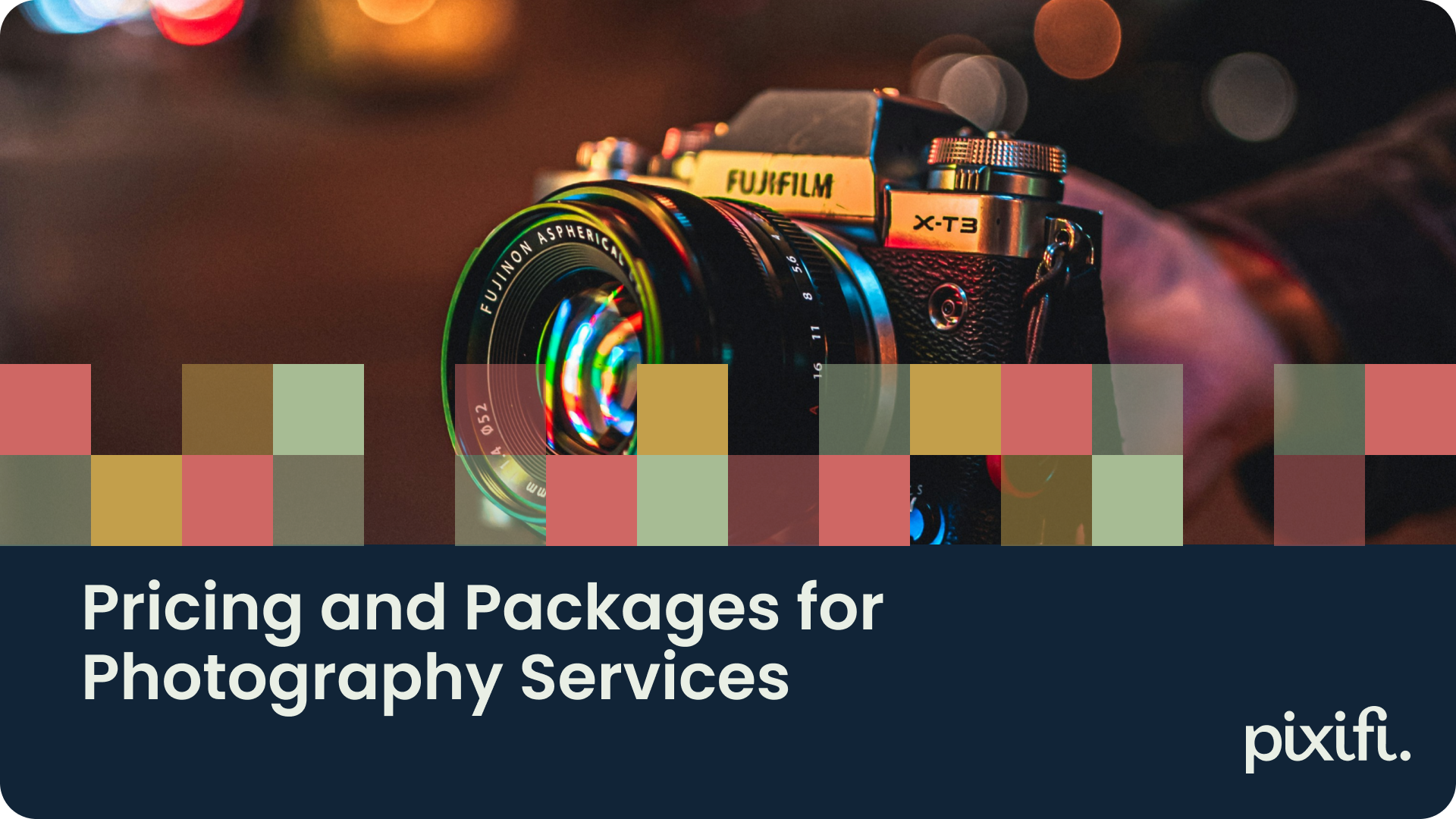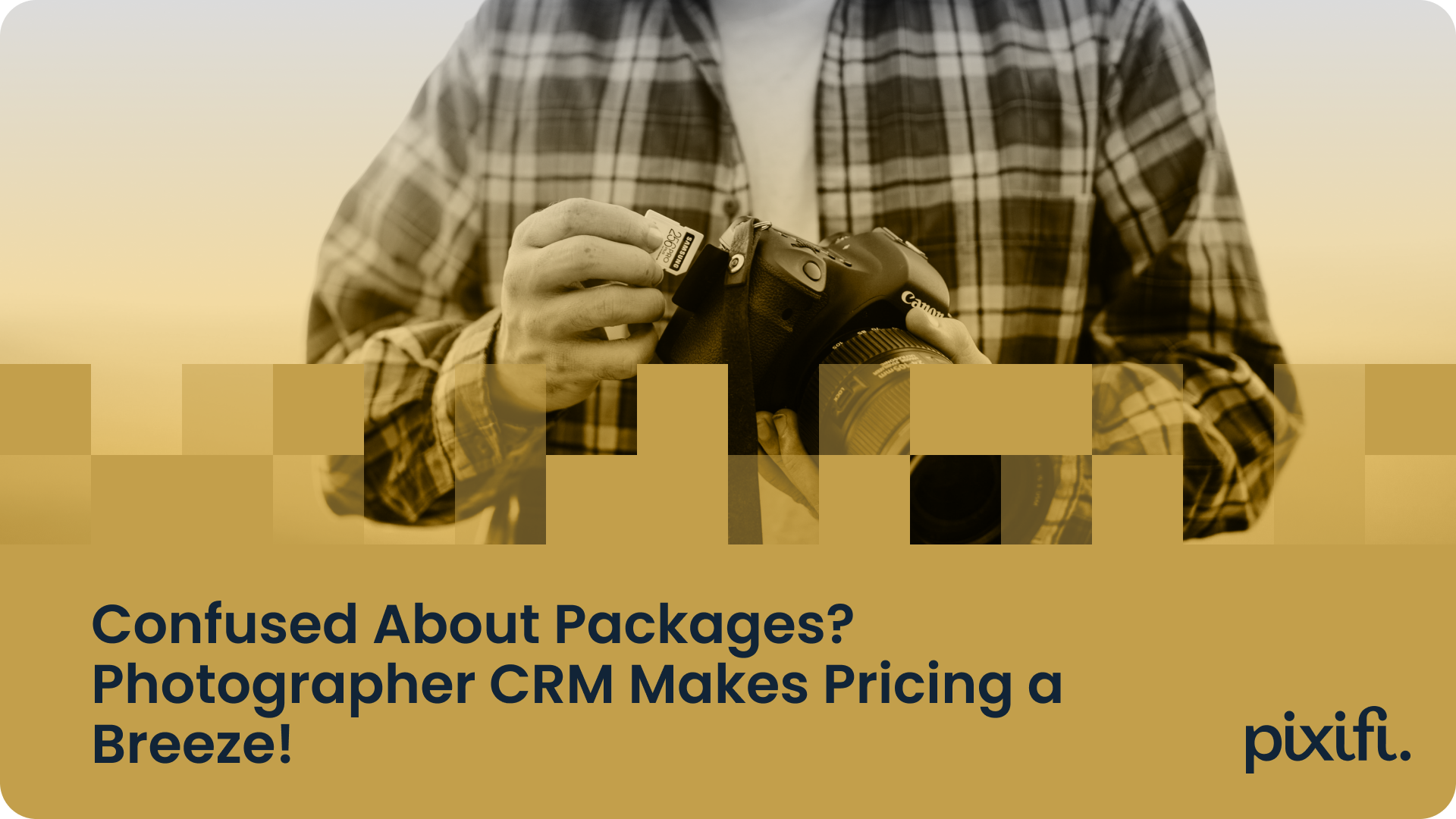Pricing and Packages for Photography Services
In the world of photography, pricing and packages play a crucial role in determining the success and profitability of your business. Whether you're a seasoned professional or just starting out, understanding the dynamics of pricing and crafting attractive packages is key to attracting clients and staying competitive in the market.
Understanding the Basics of Photography Pricing
When it comes to determining your photography prices, several factors come into play. Firstly, you need to consider the level of experience and expertise you bring to the table. Seasoned photographers with an impressive portfolio generally charge higher rates compared to those who are just starting out.
But what exactly does experience and expertise mean in the world of photography? It's not just about the number of years you've been behind the lens, but also the quality of your work. A photographer who has honed their skills over time, capturing breathtaking images that evoke emotions and tell stories, will naturally command higher prices. Clients are willing to pay for the assurance that their special moments will be beautifully preserved forever.
Additionally, location and demand also influence pricing. In regions where there's a high demand for photographers, prices tend to be higher. This is because photographers have more opportunities to book clients and can afford to charge more for their services. On the other hand, in areas where photographers are scarce, prices may be lower due to less competition.
But it's not just about supply and demand. The cost of living and economic factors of your specific area should be taken into account as well. If you're based in a city with a high cost of living, you'll need to charge more to cover your expenses and make a reasonable profit. On the other hand, if you're in a more affordable area, you may be able to offer more competitive prices.
Lastly, the type of photography you specialize in and the equipment you use will also impact your pricing. Wedding photographers, for example, often charge more due to the high level of skill and equipment required for capturing once-in-a-lifetime moments. They need to have top-of-the-line cameras, lenses, and lighting equipment to ensure that every detail is captured perfectly. On the other hand, photographers who focus on product photography may not require as much specialized equipment and may have lower pricing as a result.
Common Pricing Models in Photography
There are various pricing models that photographers employ in their businesses. One common approach is the hourly rate, in which clients pay for the photographer's time on a per-hour basis. This is particularly suitable for assignments that have a predictable duration, such as portrait sessions or corporate events.
However, it's important to consider the time and effort that goes into a photography session beyond just the hours spent shooting. There's also the time spent on pre-production, such as planning and preparation, as well as post-production, which includes editing and retouching the images. So while the hourly rate may seem straightforward, it's essential to factor in all the behind-the-scenes work that goes into creating stunning photographs.
Alternatively, some photographers opt for flat-rate pricing, where clients pay a set fee for a specific package or service. This approach simplifies the pricing structure and allows clients to know exactly what they're getting for their investment. It eliminates any confusion or surprises and provides a clear understanding of the cost upfront.
However, it's important to ensure that your flat-rate pricing is fair and reflects the value you provide. You don't want to undercharge and end up undervaluing your work, but you also don't want to overcharge and price yourself out of the market. Finding the right balance is crucial to attract clients while still making a profit.
Lastly, there's the value-based pricing model. This approach takes into account the perceived value that your photography services bring to the clients. By understanding the benefits and unique selling points of your work, you can set your prices based on the value you provide to your clients.
For example, if you specialize in destination wedding photography, you can emphasize the value of having a photographer who is experienced in capturing the beauty of exotic locations. Clients may be willing to pay a premium for the assurance that their destination wedding will be flawlessly documented. Similarly, if you have a reputation for capturing candid and emotional moments during family portrait sessions, you can highlight the value of preserving precious memories that will be cherished for generations.
Value-based pricing requires a deep understanding of your target market and what they value most in a photographer. It's about positioning yourself as a premium service provider and communicating the unique benefits that set you apart from the competition.
Breaking Down Photography Packages
When creating photography packages, it's essential to define the services and products you'll be offering to your clients. Start by considering the different types of sessions or events you'll cover, such as weddings, portraits, or corporate shoots.
For weddings, you may offer packages that include coverage for the entire day, from the bride getting ready to the reception. This could also include a second photographer to capture different angles and moments. Additionally, you might include a pre-wedding engagement shoot to help the couple feel more comfortable in front of the camera.
When it comes to portraits, you can offer packages for individuals, families, or even pets. These packages may include a certain number of poses, outfit changes, and locations. You could also provide options for indoor studio sessions or outdoor shoots in scenic locations.
For corporate shoots, you might offer packages that include headshots for employees, team photos, and coverage of company events. This could also involve providing high-resolution images suitable for marketing materials or websites.
Next, break down the specific deliverables that will be included in each package. This could range from a certain number of edited photos, prints, albums, or even additional services like retouching or videography.
When it comes to edited photos, you can specify the number of images that will be provided to the client. This could range from a minimum number to unlimited, depending on the package. You could also offer different options for print sizes, such as 4x6, 8x10, or larger prints.
In addition to prints, you might offer albums as part of your packages. These albums could be professionally designed and customized to showcase the best moments from the session or event. You could also provide options for different album sizes, cover materials, and page layouts.
Furthermore, consider the pricing tiers you'll offer to cater to different budget ranges. Having multiple packages allows you to capture a broader audience and provides clients with options to choose from.
For clients with a limited budget, you can offer a basic package that includes essential services and a smaller number of edited photos. This package could be more affordable while still providing a high-quality photography experience.
On the other hand, for clients who are looking for a more comprehensive package, you can offer a premium option. This package could include additional services like videography, a larger number of edited photos, and a luxury album.
Customizing Packages for Different Events
While having pre-defined packages can simplify the decision-making process for clients, it's important to have flexibility when it comes to customizing your services. Every event is unique, and some clients may have specific requests or preferences.
Take the time to understand your clients' needs, budget constraints, and desired outcomes. By offering additional add-ons or tailoring your existing packages to meet their expectations, you can provide a personalized experience that sets you apart from other photographers.
For example, if a client wants additional hours of coverage for their wedding, you can offer an add-on option. This allows them to extend the duration of your services to capture more moments throughout the day.
Another way to customize packages is by offering different print options. Some clients may prefer canvas prints, while others may want their images framed. By providing a variety of print choices, you can cater to different preferences and enhance the overall experience for your clients.
Additionally, you can offer retouching services as an add-on for clients who want their photos to be further enhanced. This could involve removing blemishes, adjusting skin tones, or even adding special effects to create a more artistic look.
By being flexible and accommodating to your clients' needs, you can create a photography package that not only meets their expectations but exceeds them. This level of customization will make your services stand out and leave a lasting impression on your clients.
Setting Competitive Prices for Your Services
Researching Market Rates
Before finalizing your pricing structure, it's essential to conduct thorough market research to understand the going rates in your area. This will give you a better sense of what your competitors are charging and whether your prices are in line with the market.
Remember that pricing too high may deter potential clients, while pricing too low may undervalue your skills and undermine your ability to cover expenses and make a profit. Striking the right balance is key to setting competitive prices.
Balancing Quality and Affordability
When determining your pricing, it's crucial to strike a balance between offering high-quality services and being affordable to your target market. People are willing to pay for exceptional work, but they also want to feel they are getting a fair deal.
Consider the level of expertise, equipment, and time invested in each session or event. Factor in your business expenses and desired profit margins when setting your prices. By providing value for money, you can build a loyal client base and generate positive word-of-mouth referrals.
Communicating Your Prices and Packages Effectively
Transparency in Pricing
Be upfront and transparent about your pricing from the start. Displaying your rates on your website or brochure will help potential clients make informed decisions and avoid any discrepancies or surprises later on.
In addition to stating the prices, explain the value and benefits that clients can expect to receive from your services. This will help justify the investment and showcase the value you bring as a professional photographer.
Marketing Your Photography Packages
Marketing is a crucial aspect of attracting clients and promoting your photography packages. Utilize various channels such as social media, your website, and online directories to showcase your work and highlight the packages you offer.
Share testimonials from satisfied clients or create engaging content that demonstrates your expertise. Consider offering limited-time promotions or incentives to create a sense of urgency and encourage potential clients to book your services.
Adjusting Your Pricing Strategy Over Time
When and Why to Update Your Prices
The photography market is constantly evolving, and as a business owner, it's essential to review and adjust your pricing strategy periodically. Consider updating your prices when you have gained more experience, upgraded your equipment, or expanded your services.
Additionally, factor in changes in the cost of living, inflation, or shifts in the market demand for photography services. Regularly reviewing and adjusting your prices ensures that your business remains profitable and aligned with industry standards.
Responding to Changes in the Market
Stay attuned to changes in the photography industry and adapt your pricing strategy accordingly. Keep an eye on emerging trends, technological advancements, and the evolving needs of your target market.
Be proactive in responding to market shifts by offering new services or adjusting your packages to cater to the changing demands. By staying ahead of the curve, you can maintain a competitive edge and appeal to a broader audience.
By understanding the fundamentals of pricing and packages, you can position your photography business for success. Consider the factors influencing pricing, create attractive packages, set competitive rates, and effectively communicate your value to clients. Regularly evaluating and adjusting your strategy will allow your business to thrive in the dynamic world of photography services.




